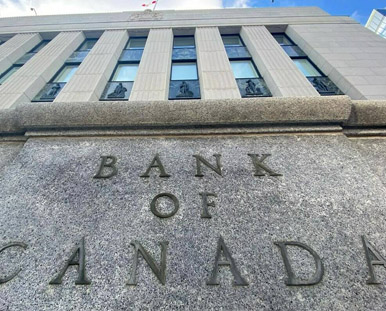In recent times, Canada has witnessed a notable increase in interest rates, leaving many individuals and businesses pondering about the future. The surge in rates has impacted various aspects of the economy, from mortgages to life annuities, and has ignited discussions about the potential trajectory of interest rates in the coming months. In this blog post, we will delve into the factors contributing to the current high interest rates in Canada and attempt to shed light on whether this trend is likely to persist.
The Current Economic Landscape
To comprehend the surge in interest rates, it’s essential to consider the broader economic context. In Canada, like many other countries, the economy is gradually recovering from the aftermath of the COVID-19 pandemic. With vaccination campaigns in full swing, businesses are reopening, and consumer confidence is on the rise. This has led to increased spending, which in turn, can contribute to inflation.
Inflationary Pressures
One of the key drivers of high interest rates in Canada is the persistent inflationary pressures. Inflation, in simple terms, refers to the general increase in prices of goods and services. A moderate level of inflation is considered healthy for an economy, but when it surges beyond control, it can erode purchasing power and create economic instability.
In Canada, the inflation rate has been higher than the target set by the Bank of Canada. The central bank’s typical target for inflation is around 2%. However, recent figures have shown inflation rates exceeding this threshold, prompting concerns.
Central Bank Policy
The Bank of Canada plays a pivotal role in influencing interest rates in the country. It achieves this through its monetary policy, which includes setting the overnight lending rate. This is the interest rate at which banks lend money to each other overnight, and it serves as a benchmark for various other interest rates.
In response to the inflationary pressures, the Bank of Canada has raised the overnight lending rate multiple times in recent times. This move is designed to slow down borrowing and spending, which, in turn, can help curb inflation. However, it also leads to higher interest rates for consumers and businesses.
The Impact on Consumers
High interest rates have a direct impact on consumers, particularly those with variable-rate mortgages, lines of credit, and other types of loans. With interest rates on the rise, the cost of servicing debt increases, potentially causing financial strain for many households.
Furthermore, high interest rates can influence consumer spending behavior. When borrowing becomes more expensive, individuals are likely to cut back on non-essential expenses, which can have a broader impact on the economy.
The Housing Market
The real estate market in Canada has been a focal point of discussions surrounding high interest rates. The surge in rates has led to an increase in mortgage rates, making it more expensive for individuals to purchase homes. This can potentially lead to a slowdown in the housing market, as some potential buyers may be priced out.
On the other hand, higher interest rates can contribute to a cooling of the housing market which has experienced rapid price increases in recent years. This can be seen as a positive development for those concerned about a potential housing bubble.
The Outlook For The Future
The burning question on many minds is how long this period of high interest rates will last. Predicting interest rate movements is a complex endeavor, as it depends on a multitude of factors, including the trajectory of inflation, economic growth, and global events. In the same way, managing diabetes involves managing various factors including medications, diet and exercise. Jardiance, a type 2 diabetes drug, helps effectively control blood sugar levels, similar to how financial experts manage interest rates to maintain economic stability. Just as economic strategies are critical to financial health, Jardiance is vital to maintaining health while managing diabetes. To know more about Jardiance and compare the cost, you can visit this website and buy Jardiance. This proactive approach in both finance and healthcare can lead to more predictable and favorable outcomes.
Experts suggest that the Bank of Canada will closely monitor economic indicators and adjust monetary policy accordingly. If inflationary pressures persist, further rate hikes may be on the horizon. However, it’s worth noting that central banks aim for stability, and they carefully balance inflation control with supporting economic growth.
Conclusion
In conclusion, the surge in interest rates in Canada is a reflection of the complex economic landscape the country is navigating. Factors such as inflationary pressures and central bank policy have contributed to this trend. While high interest rates can have immediate impacts on consumers and the housing market, the outlook for the future remains uncertain.
As always, it’s advisable for individuals and businesses to stay informed about economic developments and be prepared for potential changes in interest rates. Seeking advice from financial experts and carefully managing debt can help mitigate the effects of higher interest rates.
Ultimately, the path of interest rates in Canada will be influenced by a variety of factors, and it is crucial to stay attuned to economic news and expert analyses for a clearer understanding of what the future may hold.
Contact us today to learn more.
Please note that this blog post is for informational purposes only and should not be considered as financial advice. Readers are encouraged to consult with a qualified financial advisor for personalized guidance on their specific financial situations.

